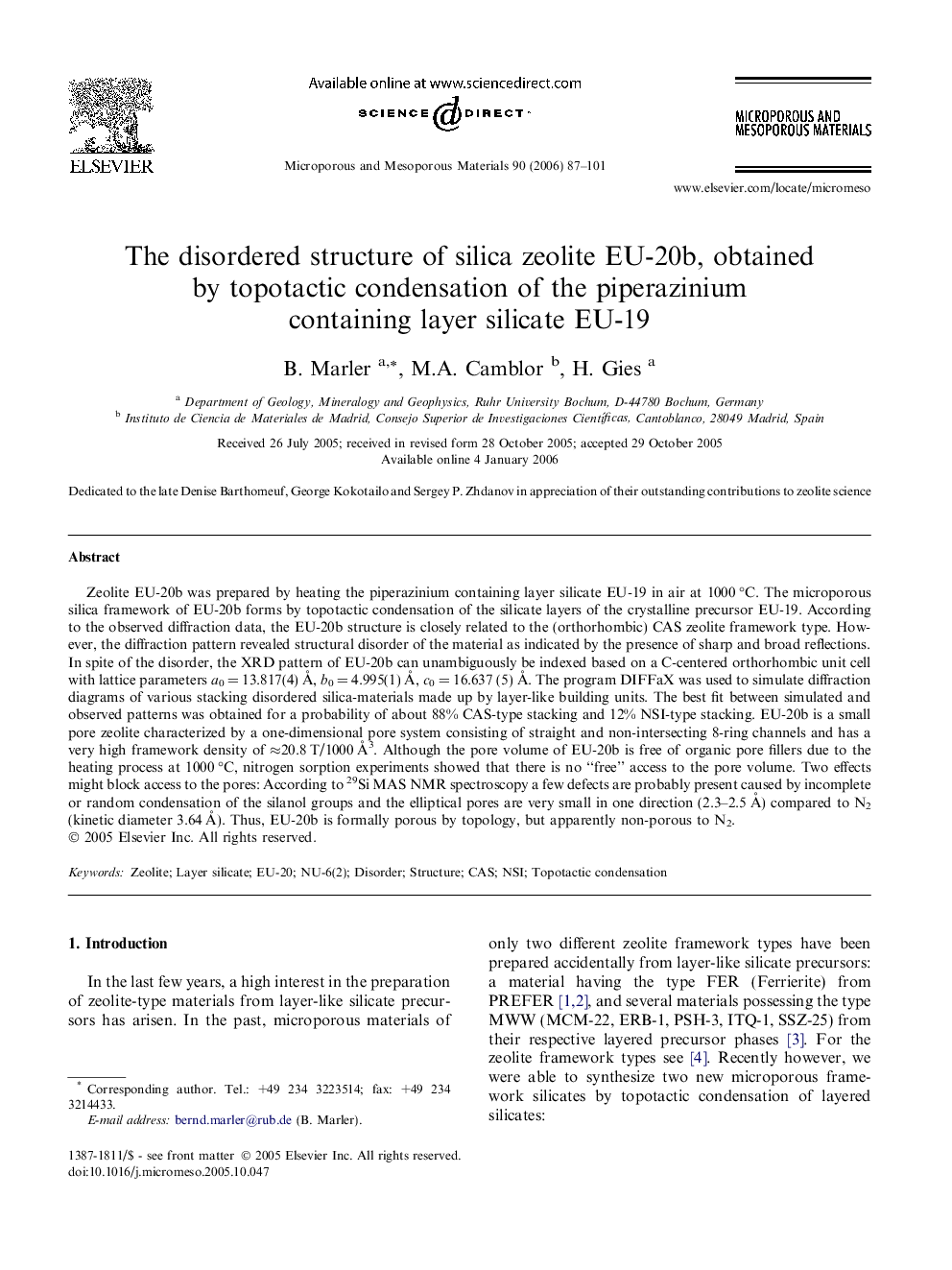| Article ID | Journal | Published Year | Pages | File Type |
|---|---|---|---|---|
| 77385 | Microporous and Mesoporous Materials | 2006 | 15 Pages |
Zeolite EU-20b was prepared by heating the piperazinium containing layer silicate EU-19 in air at 1000 °C. The microporous silica framework of EU-20b forms by topotactic condensation of the silicate layers of the crystalline precursor EU-19. According to the observed diffraction data, the EU-20b structure is closely related to the (orthorhombic) CAS zeolite framework type. However, the diffraction pattern revealed structural disorder of the material as indicated by the presence of sharp and broad reflections. In spite of the disorder, the XRD pattern of EU-20b can unambiguously be indexed based on a C-centered orthorhombic unit cell with lattice parameters a0 = 13.817(4) Å, b0 = 4.995(1) Å, c0 = 16.637 (5) Å. The program DIFFaX was used to simulate diffraction diagrams of various stacking disordered silica-materials made up by layer-like building units. The best fit between simulated and observed patterns was obtained for a probability of about 88% CAS-type stacking and 12% NSI-type stacking. EU-20b is a small pore zeolite characterized by a one-dimensional pore system consisting of straight and non-intersecting 8-ring channels and has a very high framework density of ≈20.8 T/1000 Å3. Although the pore volume of EU-20b is free of organic pore fillers due to the heating process at 1000 °C, nitrogen sorption experiments showed that there is no “free” access to the pore volume. Two effects might block access to the pores: According to 29Si MAS NMR spectroscopy a few defects are probably present caused by incomplete or random condensation of the silanol groups and the elliptical pores are very small in one direction (2.3–2.5 Å) compared to N2 (kinetic diameter 3.64 Å). Thus, EU-20b is formally porous by topology, but apparently non-porous to N2.
